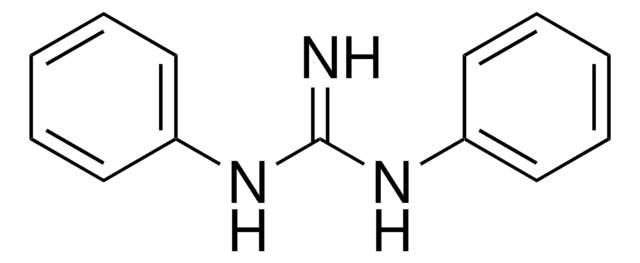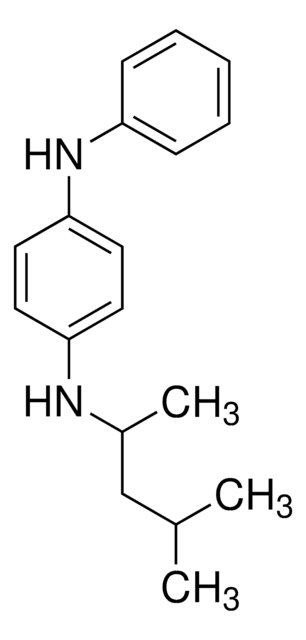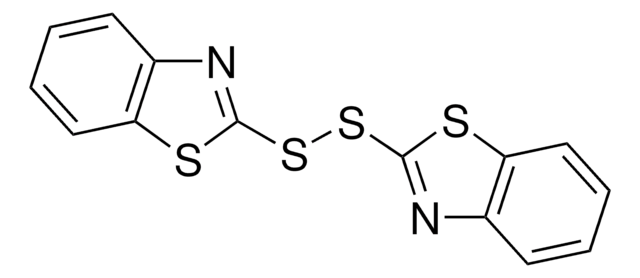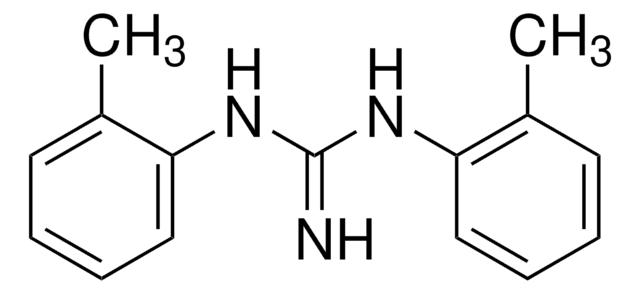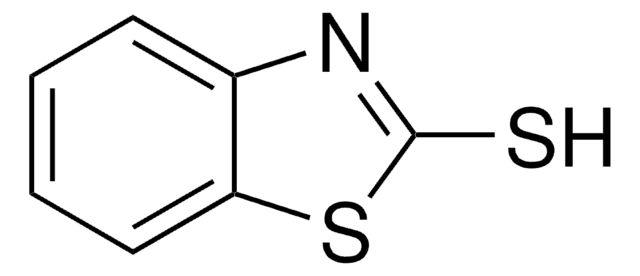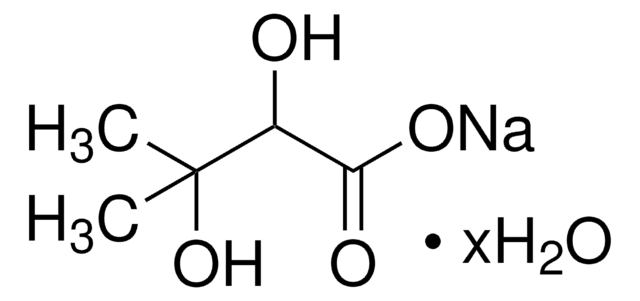43029
1,3-Diphenylguanidine
analytical standard (for titrimetry)
About This Item
Recommended Products
grade
analytical standard (for titrimetry)
Quality Level
Assay
≥99.5% (HPLC)
technique(s)
titration: suitable
mp
146-148 °C (lit.)
149-150 °C
application(s)
cleaning products
cosmetics
food and beverages
personal care
format
neat
SMILES string
N=C(Nc1ccccc1)Nc2ccccc2
InChI
1S/C13H13N3/c14-13(15-11-7-3-1-4-8-11)16-12-9-5-2-6-10-12/h1-10H,(H3,14,15,16)
InChI key
OWRCNXZUPFZXOS-UHFFFAOYSA-N
Looking for similar products? Visit Product Comparison Guide
General description
Application
Features and Benefits
- Available as a solid in a secure glass bottle to ensure its stability for the entire shelf life until opened.
- High-quality offering accurate titer determinations
- Accompanied by a certificate of analysis (CoA)
Signal Word
Danger
Hazard Statements
Precautionary Statements
Hazard Classifications
Acute Tox. 3 Oral - Aquatic Chronic 2 - Eye Irrit. 2 - Repr. 2 - Skin Irrit. 2 - STOT SE 3
Target Organs
Respiratory system
Storage Class Code
6.1C - Combustible acute toxic Cat.3 / toxic compounds or compounds which causing chronic effects
WGK
WGK 3
Flash Point(F)
338.0 °F - closed cup
Flash Point(C)
170 °C - closed cup
Personal Protective Equipment
Choose from one of the most recent versions:
Already Own This Product?
Find documentation for the products that you have recently purchased in the Document Library.
Our team of scientists has experience in all areas of research including Life Science, Material Science, Chemical Synthesis, Chromatography, Analytical and many others.
Contact Technical Service